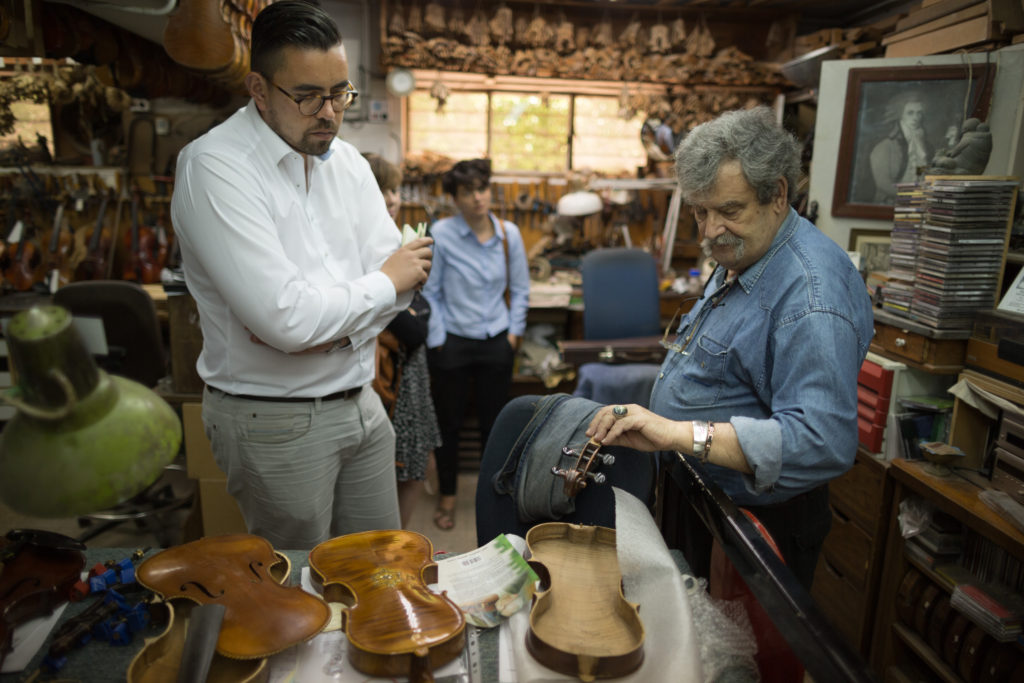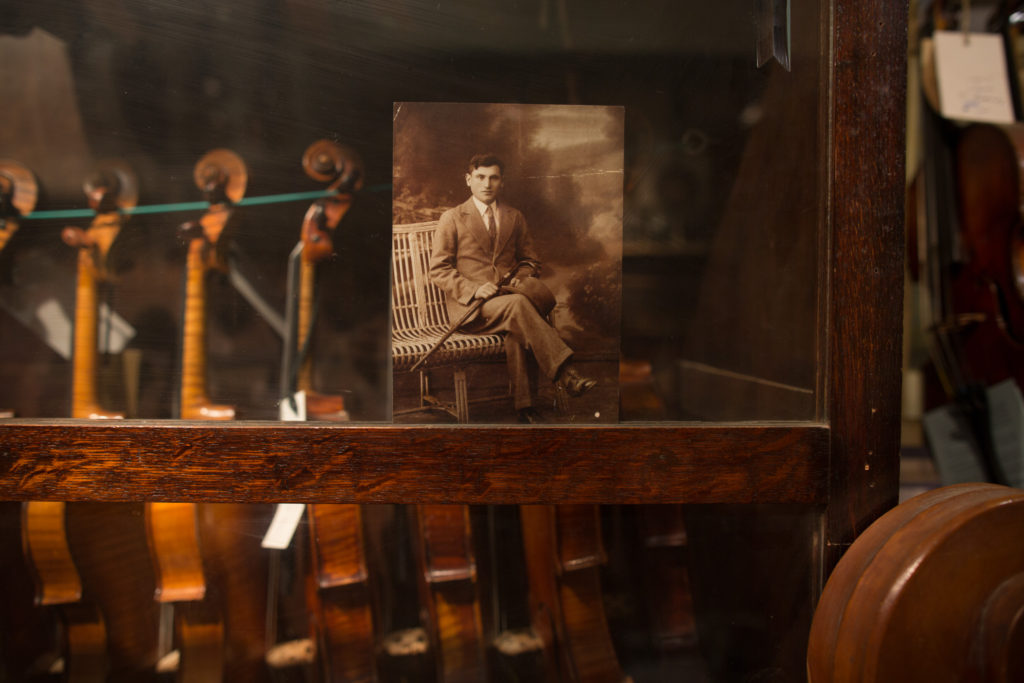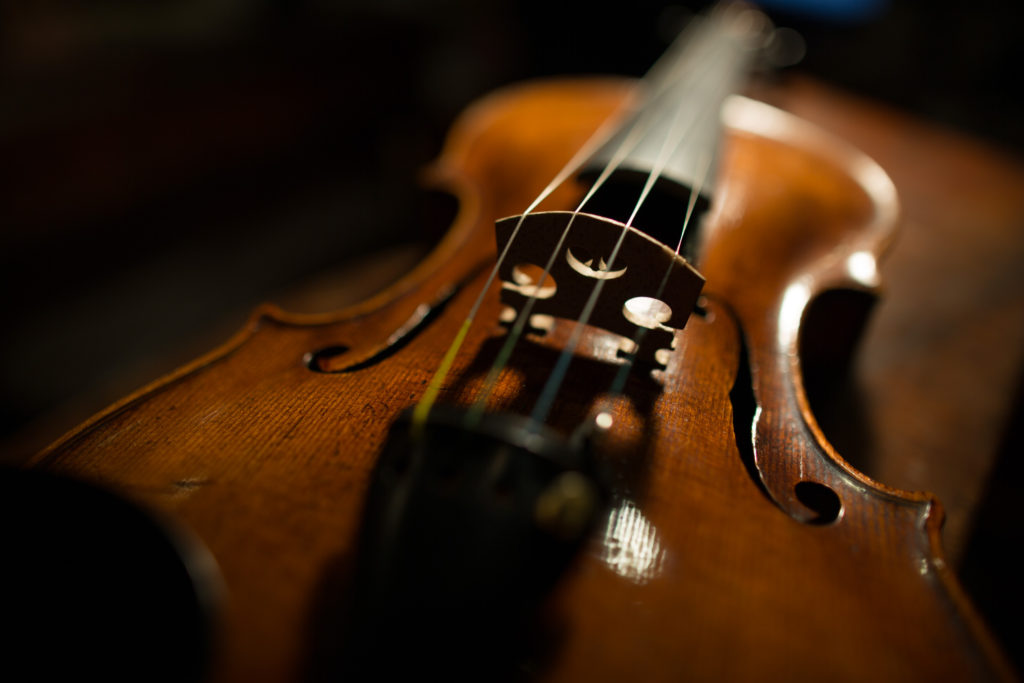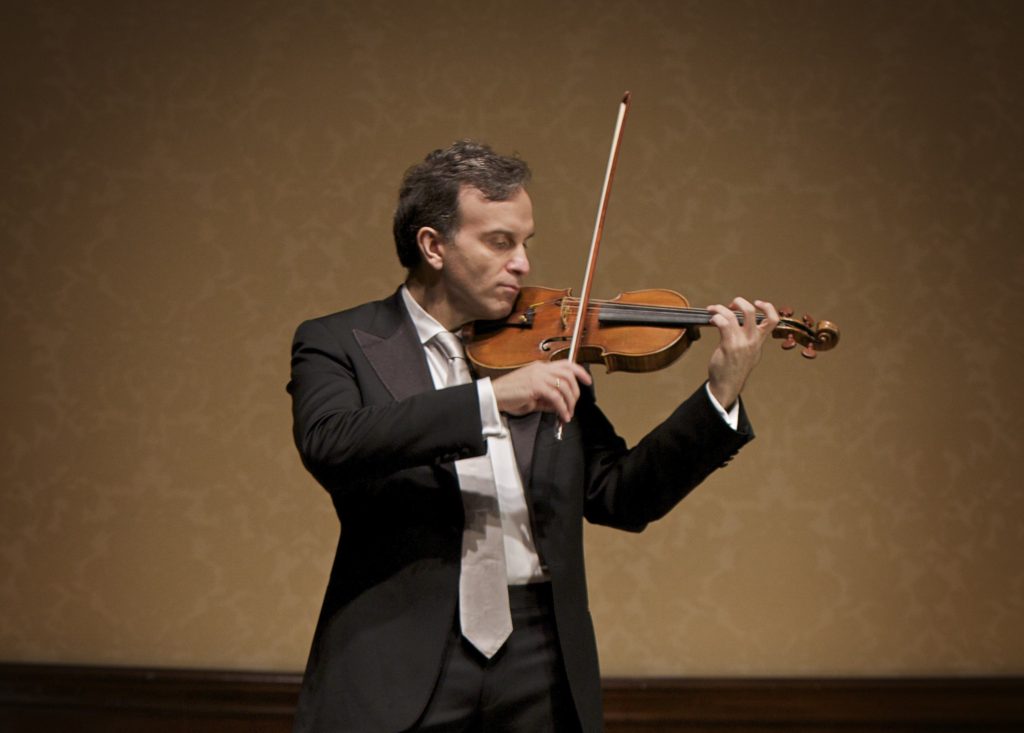Violins of Hope – Giving Voice to the Silenced
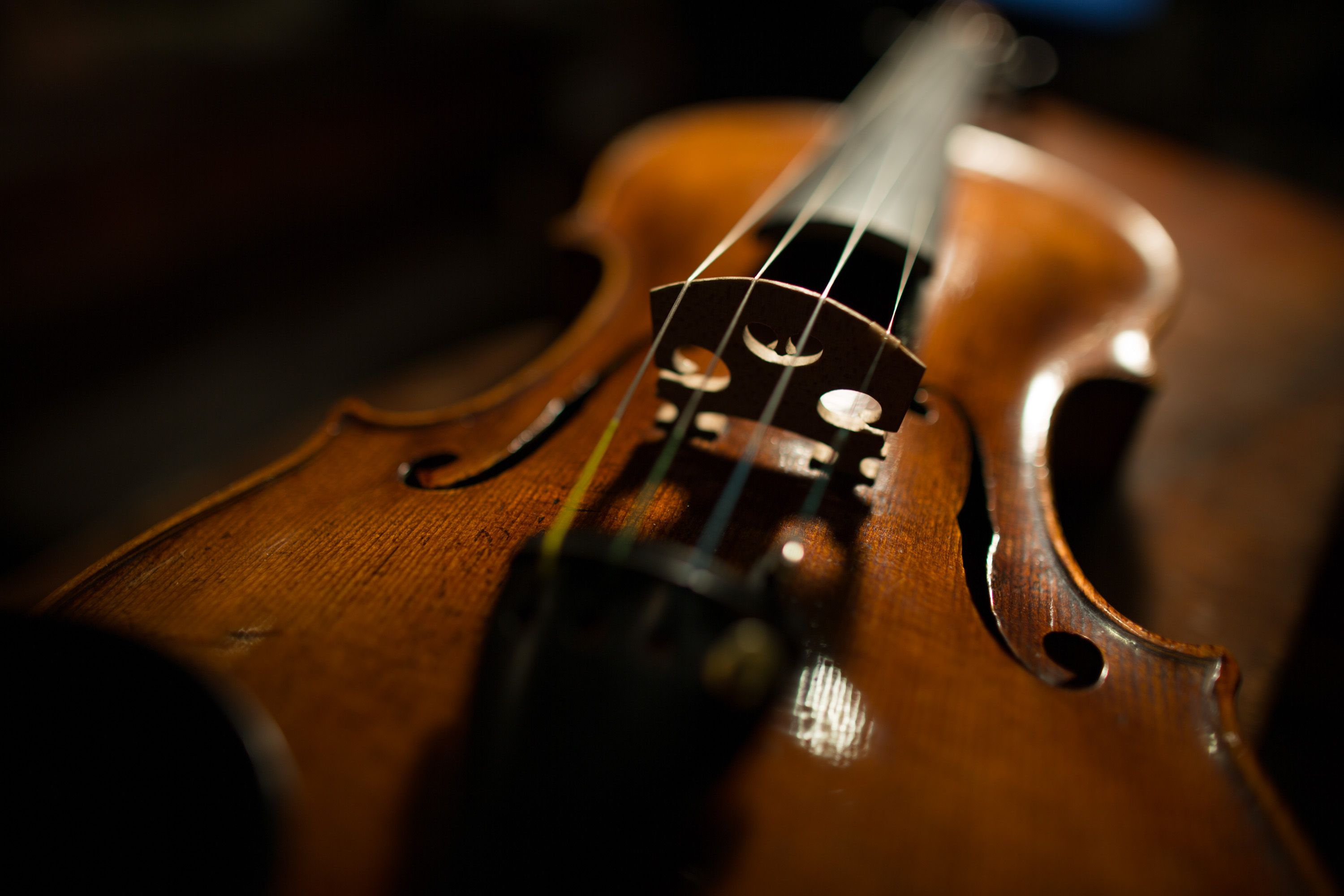
Writer Joseph J. Airdo
Photography Courtesy of Violins of Hope and Daniel Levin Photography
[dropcap]A[/dropcap] simple sound can bring about a wave of emotions. That wave becomes a storm when said sound is being made by a musical instrument that has been silent for decades—a storm powerful enough to bring history back to life.
Such is the case with violins whose soulful notes were once coaxed from them by owners who perished during the Holocaust.
“Not only are these the musical instruments being played, but these are the voices of the people who owned them and witnessed these tragedies,” said Julee Landau Shahon, vice chair of the Jewish Federation of Greater Phoenix. “The violins stand as witnesses as well to what their owners experienced, saw and went through. The actual voices of the individuals have been silenced, but here is an opportunity for their voices to, symbolically, be heard again.”
Shahon is co-chair of Violins of Hope, a series of exhibits, lectures, concerts and educational programs that tell the remarkable stories of violins played by Jewish musicians during the Holocaust. The Jewish Federation of Greater Phoenix partnered with more than 30 organizations to bring the event to the Valley.
“The violin was always very important in Jewish life,” Shahon explained. “It was an instrument that the Jews could pick up and easily take with them as they moved from location to location.
“During the Holocaust, specifically, these violins gave a sense of humanity when they were played—to the musician as well as to those people who were hearing them. They gave hope, they calmed people and, in many cases, these violins enabled people to survive.”
Violins of Hope centers around a Feb. 26–March 24 exhibition at Scottsdale Center for the Performing Arts, 7380 E. 2nd St. in Scottsdale, that features 21 of the more than 60 violins Israeli violinmaker Amnon Weinstein has restored over the past 20 years.
Other activities—many of which are free or low-cost to encourage participation—include a screening of a PBS documentary narrated by Adrian Brody, a book signing by “Violins of Hope, Instruments of Hope and Liberation in Mankind’s Darkest Hour” author James A. Grymes and an exclusive preview of a multimedia production based on stories of the Shanghai Jewish refugees.
Renowned portrait photographer and artist Daniel Levin, who spent time with Weinstein in his workshop in Tel Aviv, Israel, said the luthier’s father Moshe had collected violins brought to him after the war that people would not necessarily want back.
“He wouldn’t work on them because there was no market for them,” Levin noted. “So he accumulated them and eventually offered one to his son Amnon, who was just getting into the business. Eventually, Amnon had this epiphany that he could bring the people back through their violins.”
Since then, Weinstein has devoted his life to locating and restoring violins that survived the Holocaust as a tribute to those who were lost—including 400 of his own relatives. He hopes his efforts reclaim lost heritage, give a voice to the victims and reinforce positive messages of hope and harmony.
Weinstein continues to locate and collect these instruments to this day. One of the violins on display has roots right here in the Valley, as a family contacted Shahon with a very valuable violin owned by one of their relatives who, in 1939, fled Hamburg, Germany. Shahon connected the family with Weinstein and his son Avshi, who restored the instrument for inclusion in Violins of Hope.
Weinstein’s restored violins can not only be seen but heard during the Valley’s Violins of Hope activities. A highlight of the two-month-long event is a pair of concerts 8 p.m. Saturday, Feb. 23 at Scottsdale Center for the Performing Arts, and 3 p.m. Sunday, Feb. 24 at La Casa de Cristo Lutheran Church in Scottsdale.
The concerts are part of Arizona Musicfest’s Festival Orchestra Week, which kicks off Feb. 17. For Arizona Musicfest’s Violins of Hope concerts, Maestro Robert Moody will lead the Festival Orchestra, comprised of musicians from America’s top orchestras, in performances of Ludwig van Beethoven’s “Leonore Overture,” Gustav Mahler’s “Totenfeier” and Allan Naplan’s “Schlof Main Kind, A Yiddish Lullaby.”
World-renowned violinist Gil Shaham will be featured as a guest soloist for performances of Johannes Brahms’ “Violin Concerto” and John Williams’ theme from “Schindler’s List.”
“I think that there is an emotional connection when you hear a violin from someone who perished, was murdered or witnessed these tragic events,” Shahon said. “To hear their music is a little bit different than just hearing a violin being played. It’s a deeper, personal connection that the audience member experiences. It’s more enriched. It connects to your soul.”
Levin agreed, noting that every violin sounds different to an aficionado.
“The fact that these people had held them, scratched them and left fingerprints on them, and that so much joy or even sadness through somber music came through them kind of still comes through, even though the people are gone,” Levin said. “It’s very magical.”
In fact, those scratches and fingerprints are perhaps the most important qualities of the violins. Weinstein told Levin during his visit to his workshop that he restores the violins to their best playability but keeps their history intact.
“To this day, he makes them the best playable violin they could be—likely better than they sounded when they were new because Amnon is very good at what he does and the violins had not necessarily been stored very well—but he leaves the dirt,” Levin said. “He lets the marks remain. In art, we use a term called index. Those marks are indexed. They are a signature of the user, and those remain whenever possible.”
Levin’s photographs of Weinstein as he lovingly restores and gives new voice to the stringed instruments will be on display Feb. 3–March 26 at the Arizona Jewish Historical Society, 122 E. Culver St. in Phoenix. The photographer felt a responsibility to present an honest and intimate portrayal that is also very beautiful despite the subject’s weight.
“The restoration of the violins is very beautiful,” Levin said. “I wanted to take photographs that not only share that beauty but share the craft of what Amnon does. The violins are gorgeous, but these photographs are backstory in a way that words alone can’t necessarily convey.
“People think a photograph only represents a moment in time. But it often suggests what was, and even suggests the future.”
Levin added that even marks on a violin case are beautiful things that are very tactile—a quality that comes through despite being captured in two-dimensional photographs. He, Shahon and everyone else that has worked together to bring Violins of Hope to the Valley want the event to touch the lives of everyone in the community.
“This is an incredible opportunity to see and hear the violins played and to hear the stories of the individuals who owned them, most of whom perished in the Holocaust,” Shahon said. “It is an opportunity for students as well as adults in the state of Arizona to witness these events, experience the concert and be part of educational programs that I personally feel are desperately needed at this point in time.”
Since starting her involvement with Violins of Hope, Shahon has become even more passionate and motivated to help her community understand what happened during the Holocaust—and why it happened—in an effort to bring about a better present and a better future.
“It has reinforced my desire to have the history of the Holocaust be told in a way that our [community] really connects with it personally,” Shahon explained. “We live in a divided culture right now. It is more important than ever before for people to understand the commonality that we share and to have the empathy for others that perhaps are different.
“The lessons from the Holocaust are not lessons that should be kept in the past. They are relevant to the world that we live in today—in our country and around the world.”
azmusicfest.org
violinsofhopephoenix.com


